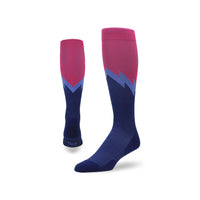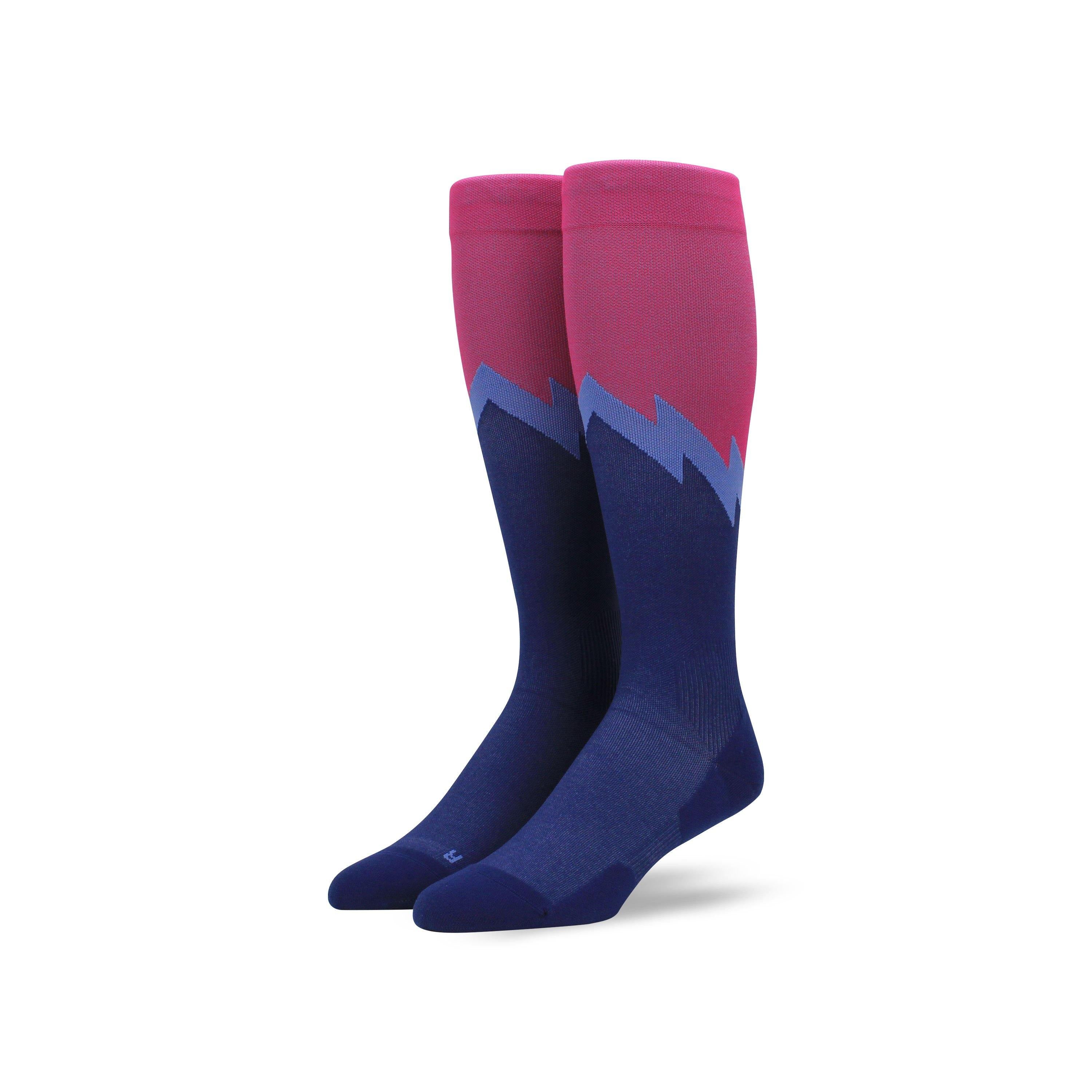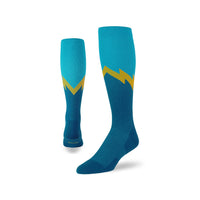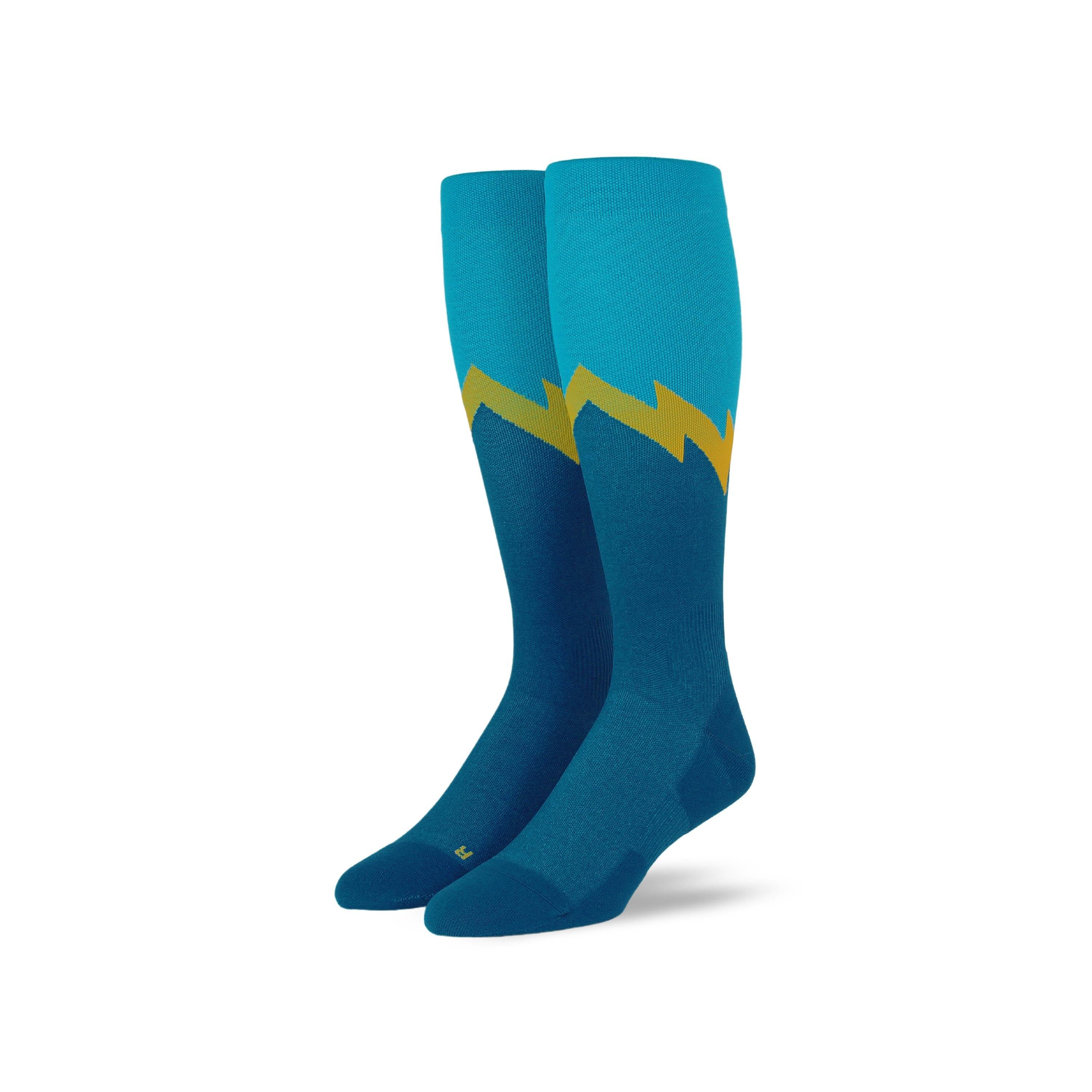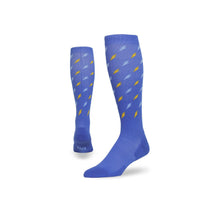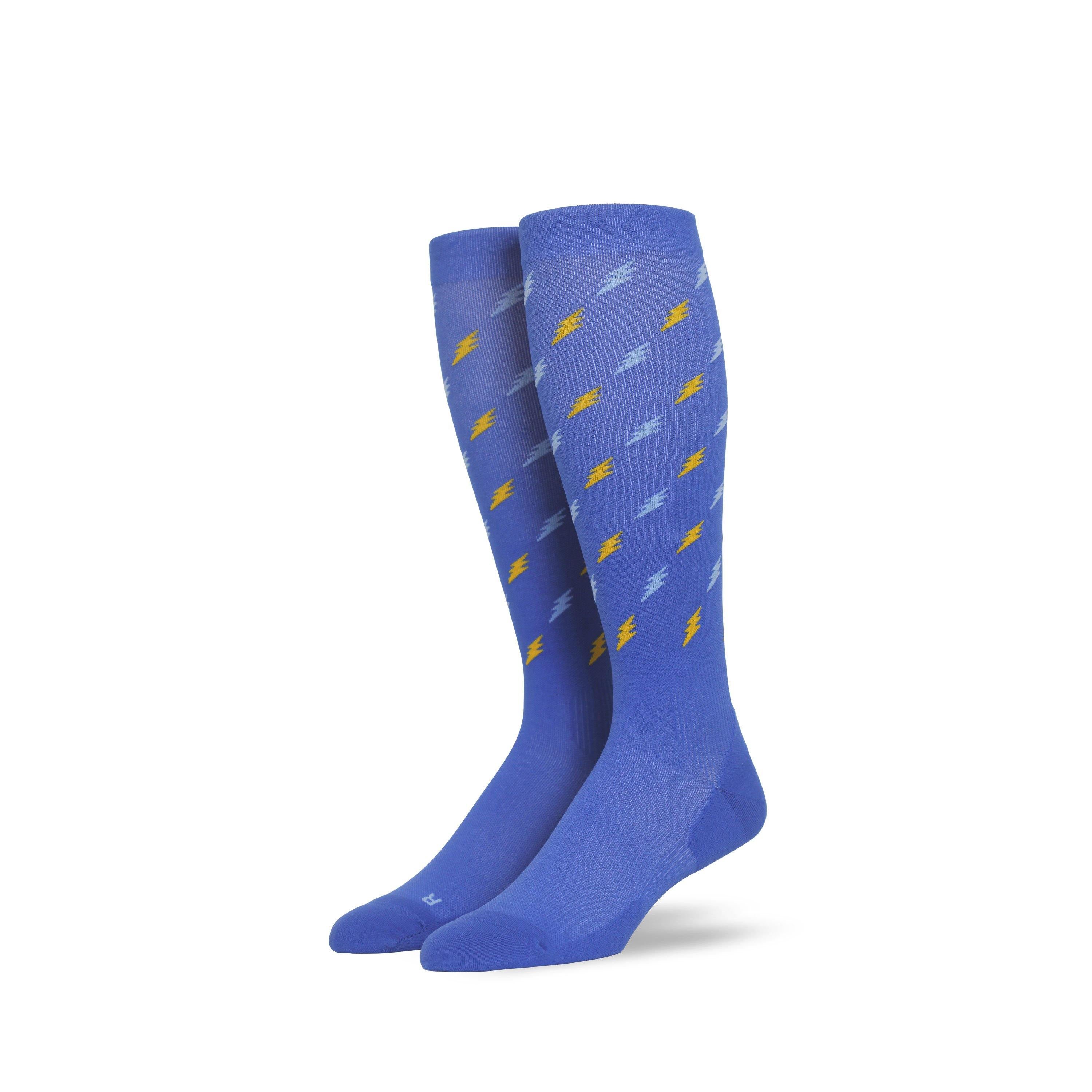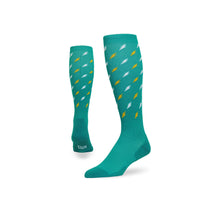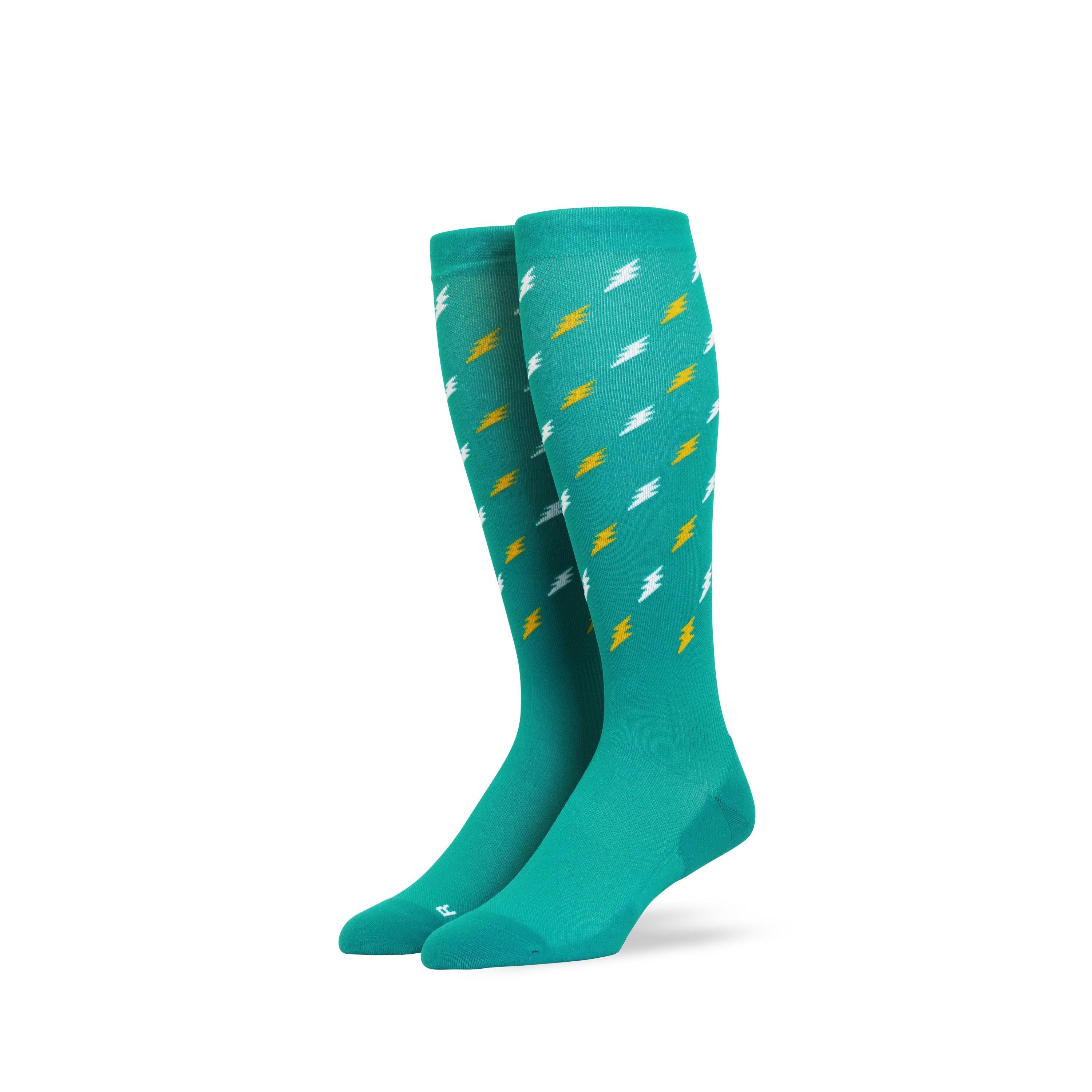Why You Should Wear Compression Socks on Long Flights
Travel Health | Graduated Compression Technology | Benefits | Proper Wear & Care | Compression Socks For Travel

For anyone who's traveled by plane, the small space and tight seats are all too familiar. These seats, made with not much space for our legs, can make even short flights feel long and uncomfortable. After sitting for a while, you might start to feel your legs go numb or get restless. This can be even harder for tall people. That's where compression socks come in handy, especially for long flights.
The Importance of Compression Socks for Travel
Understanding the Impact of Long Flights
Should you wear compression socks on a plane? Staying seated for extended periods on an airplane can lead to various health issues. As flights these days try to accommodate more passengers by placing seats close together, there's been a rise in health problems like DVT during air travel. Thankfully, wearing compression socks can help decrease the risk of such complications.
Health Risks Associated with Air Travel
Frequent travelers might be familiar with the discomfort that comes from long flights. This discomfort can arise from the seating position on planes. When seated for a while, blood can pool in the veins of your lower body, increasing pressure in your legs and ankles. This can make sitting without fidgeting a challenge.
On planes, when discomfort sets in, many try to stretch to get some relief. However, with limited space, this isn't always an easy solution. Moreover, walking around the plane can be tough due to the confined conditions.
But there's more than just discomfort to think about. Extended flights can also increase the risk of blood clots, swelling, and other circulation issues. That's where compression socks come into play, offering a solution that doesn't demand a lot of movement.
Exploring Graduated Compression Technology
The Science Behind Graduated Compression
To fully grasp the benefits of compression socks, it's essential to comprehend the science behind them. This knowledge can empower you to make a well-informed choice about using them during travel.
Compression Technology
Compression socks are designed to apply varying levels of pressure on the legs. The highest pressure is at the ankles, and this pressure tapers off as the socks ascend the calves. This strategic pressure distribution enhances blood circulation by assisting the blood's upward journey towards the heart.
Compression Fabric
Compression socks are typically made from elastic materials such as nylon or spandex, which allow the socks to stretch and conform to the shape of the legs. The fabric provides a gentle yet firm pressure that promotes blood movement through the veins and helps prevent blood pooling.
Research and Evidence
Numerous studies demonstrate the positive effects of compression socks on improving blood flow, reducing swelling, and preventing deep vein thrombosis. So, if you're asking yourself, 'Should I wear compression socks on a plane?', the evidence certainly suggests that it's a good idea. It can significantly reduce the risk of developing blood clots and alleviate symptoms of leg fatigue and discomfort.
Medical Applications
Compression therapy has long been used in the medical field to manage various conditions such as venous insufficiency, edema, and lymphedema. Compression socks can help manage these conditions by applying graduated pressure and improving overall vascular health.
Advantages of Compression Socks for Travelers
Enhancing Comfort and Health During Flights
On long flights, wearing graduated compression travel socks can be beneficial because of the health concerns associated with extended periods of sitting.
These socks help balance the pressure in your legs and ankles, promoting consistent blood circulation. They prevent the accumulation of blood in the lower extremities and reduce the risk of blood clot formation. Beyond these significant health advantages, compression socks also address minor discomforts like light swelling or typical aches, allowing travelers to have a more relaxed and comfortable journey.
Addressing Deep Vein Thrombosis with Compression Socks
The clots we're discussing are referred to as deep vein thrombosis (DVT). Unlike common blood clots, DVTs form in the body's major veins, which are directly connected to essential organs. These can pose a severe threat if they migrate to the lungs.
Graduated compression socks play a critical role in protecting individuals at a higher risk of DVT, such as the elderly, those who are overweight, or individuals with a family predisposition to the condition. These socks work by ensuring a steady blood flow, preventing clot formation. One challenge travelers face on a plane is fluctuating blood pressure. Compression socks provide a means to to stabilize this pressure and prevent DVT from developing.
Browse Compression Socks For Travel >>
Why Wear Compression Socks When Flying
Reducing Leg Swelling
One of the primary benefits of compression socks is their ability to enhance blood circulation. By doing so, they prevent blood from accumulating in the feet and legs, which can lead to swelling and discomfort.
Preventing Blood Clots
Prolonged sitting during flights can increase your risk of deep vein thrombosis (DVT), a serious condition where blood clots develop in the legs. Wearing compression socks on a long flight helps reduce this risk by promoting healthy blood flow.
Comfort and Support
Beyond health benefits, these socks also offer added leg support. This support can significantly reduce sensations of leg fatigue or the onset of cramps, common issues during long flights.
Faster Recovery Post-Travel
For those hitting the ground running after a flight, be it for work or exploration, compression socks can be advantageous even post-flight. They aid in reducing muscle recovery time, getting you back on your feet quicker and with less soreness.
Proper Wear & Care of Compression Socks
Choosing the Right Compression Socks For a Long Flight
When it comes to selecting compression travel socks, there are a few essential factors to consider:
Consult Your Doctor
If you have pre-existing medical conditions such as diabetes or heart problems, consult your doctor before using compression socks.
Sizing
It is important to measure yourself carefully before purchasing compression socks – this will ensure that you get the right fit which maximizes benefits while minimizing discomfort.
Material and Comfort
The material should be breathable and made from moisture-wicking materials like nylon or polyester blends, which helps to keep sweat away from your skin during long periods of wear.
Style and Design
Compression socks now come in various colors, patterns, and styles. Choose a pair that suits your preference, ensuring you feel confident and fashionable while caring for your legs during travel.
Graduated Compression
Graduated compression mimics your body's natural circulation system, so look for socks that offer graded pressure from ankle to calf to knee or thigh.
When Should You Wear Compression Socks While Traveling?
Compression socks are designed to boost circulation, making them an excellent choice for travelers. Their benefits can be particularly felt during long trips. Here's a guide on when to put on compression socks for flying and their usage during travel:
-
Before Your Journey: It's a good idea to wear your compression socks even before you start your travel. This ensures you're already reaping the benefits by the time you begin your journey, especially if you have a long way to get to the airport.
-
During the Flight: Wear compression socks on plane trips, especially if it's a lengthy one. They help counteract the lack of movement and the effects of sitting for long durations.
-
After Arrival: If you've been on a long flight, consider wearing your compression socks for a few more hours post-landing. This can assist in reducing any potential swelling and improve overall leg comfort.
Tips for a Comfortable Air Travel Experience
Wearing travel compression socks is just one aspect of ensuring a comfortable and healthy journey. Here are some additional tips to enhance your travel experience.
-
Hydration is Key: Always keep yourself hydrated. Drink water consistently before and throughout your flight. It not only keeps you refreshed but also supports healthy blood circulation.
-
Keep Moving: Don't remain static for too long. Take brief strolls in the cabin or do some in-seat exercises such as ankle circles, leg stretches, or calf pumps to boost circulation and avert stiffness.
-
Dress for Comfort: Prioritize comfort over style when flying. Wear breathable, loose clothes that give you space to move. Layers are always a good idea to adjust to varying temperatures.
-
Prop Up Those Feet: Utilize footrests or a makeshift pillow beneath your feet. This slight elevation can alleviate swelling and support blood flow.
-
Seat Selection Matters: Opt for aisle seats if you like more freedom to move about. If leg space is a concern, exit rows might be your best bet.
-
Curb Caffeine and Alcohol: While they might seem tempting, both can sap your hydration, exacerbating jet lag. Focus on water and other hydrating drinks.
-
Nutritious Nibbles: Pack your snacks! Plane food tends to be high in sodium. Healthy alternatives like dried fruits, unsalted nuts, or granola bars can make a world of difference.
-
Drown Out the Noise: Noise-canceling headphones or simple earplugs can be a lifesaver, blocking out engine hum and chatter, ensuring you get some undisturbed rest.
-
Your Personal Comfort Kit: Never underestimate the power of a good neck pillow and blanket. They can drastically upgrade your sleep quality on the plane.
-
Prep for Time Zones: Heading to a different time zone? Gradually shift your sleep schedule a couple of days ahead. This proactive approach can minimize jet lag's effects.
Step-by-Step Guide: How to Put On Compression Socks
Becoming familiar with the process of putting on compression socks prior to your flight can ease the experience. Given the limited space in airplane cabins, mastering the technique at home ensures you're prepared and comfortable when it's time to wear them for travel.
Here are some simple steps to follow:
- First, make sure you have the correct size of compression socks. They should fit snugly but not be too tight or uncomfortable.
- Sit down in a comfortable position with your feet flat on the floor.
- Turn the compression sock inside out and place your foot inside the toe area.
- Slowly pull the sock up towards your knee, making sure to smooth out any wrinkles or creases as you go along.
- Once the sock is pulled up to just below your knee, check that it's evenly distributed and not bunched up anywhere.
- Repeat these steps for the other leg.
Caring for Your Compression Socks: Washing and Maintenance Guide
Here are some tips on how to properly wash and care for your compression socks:
Hand Wash or Use a Gentle Cycle
Compression socks should not be washed in hot or cold water, as extreme temperatures can damage the elasticity of the fabric. Instead, try handwashing the socks in lukewarm water with a mild detergent or use a gentle cycle on your washing machine. Avoid using bleach or fabric softeners as these can also damage the material.
Do Not Wring Out
When drying your compression socks, do not wring them out. Simply pat or squeeze the excess water out with a towel, then hang dry them outside or inside (away from direct sunlight). Avoid tumble drying as this can damage the sock's integrity and reduce its effectiveness.
Store Them Properly
Once completely dry, store your compression socks in a cool, dry place. You can fold them neatly or roll them up into a ball, but avoid leaving creases in the fabric, which can affect their comfort and fit.
By following these simple steps for proper washing and care of your compression socks, you can ensure they maintain their effectiveness and provide long-lasting benefits for years to come.
Beyond the Skies: Other Uses For Compression Socks
While compression socks are often referred to as airplane socks, their benefits extend beyond air travel. Explore other situations where these socks can provide comfort and support.
On-the-Go Adventures
Whether on a road trip, train voyage, or a trek, compression socks minimize muscle fatigue and boost blood circulation, making every journey more comfortable.
Sports and Exercise
Many athletes and fitness enthusiasts swear by compression socks. They enhance circulation, reduce post-activity aches, and accelerate muscle recovery, making them essential for runners, cyclists, and high-intensity workout enthusiasts.
Occupational Use
Individuals who spend long hours on their feet, such as nurses, retail workers, or factory workers, can benefit from wearing compression socks. They help alleviate leg fatigue, swelling, and discomfort, allowing for greater productivity and reduced risk of occupational health issues.
Pregnancy Support
Pregnant women often experience swollen legs and feet because of hormonal changes and increased pressure on the veins. Compression socks designed specifically for pregnancy can provide relief by promoting healthy blood flow, reducing swelling, and preventing varicose veins.
What Are the Best Compression Socks for Travel?
When it comes to travel compression socks, comfort and durability are essential. Tiux is one of the best options for travel socks. Tiux compression socks offer superior comfort and support, with a 20-30 mmHg graduated compression for improved circulation, and are made from soft and breathable fabric, which helps to reduce swelling in feet and ankles during extended periods of sitting. Additionally, they feature extra cushioning in the heel and toe area for added comfort and protection. Many travelers swear by them to help reduce swelling and discomfort in their feet and legs during a long flight.
So the next time you take off on a long-haul flight, make sure compression socks are on your list of must-have travel accessories. Wearing graduated compression socks on airplane flights will help keep you feeling comfortable while exploring new destinations around the world.

